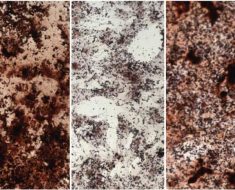
In Europe, melanoma is the fifth most common type of cancer and is the major cause of death from skin cancer. Northern Europe displays the largest age-standardized rate mortality of 3.8 per 10,000 in the region, with an incidence of 23.4.
Excision of a primary tumor remains essential in diagnosing melanoma, and the decision for the operation is generally based on the dermatoscopic evaluation of the lesion. However, the accuracy of melanoma clinical diagnosis is only at 65% and strongly relies on the experience of the physician-dermatologist carrying out the analysis.
“The novelty of our method is that it combines diagnostic information obtained from different non-invasive imaging technologies such as optical spectrophotometry and ultrasound. Based on the results of our research, we can confirm that the developed automated system can complement the non-invasive diagnostic methods currently applied in the medical practice by efficiently differentiating melanoma from a melanocytic mole,” says Professor Renaldas Raisutis, head of the team behind the research at Kaunas University of Technology.
In the study, carried out by the researchers of two Lithuanian universities, diagnostic images of skin lesions acquired from 100 different patients were evaluated. By comparing and analyzing complex data on skin tumors recorded by different techniques, the researchers were able to develop a novel diagnostic system, differentiating melanoma from a benign nevus with accuracy higher than 90%.
“An efficient diagnosis of an early-stage malignant skin tumor could save critical time: more patients could be examined and more of them could be saved,” says Prof Raisutis.
According to Prof Raisutis, the novel diagnostic system is firstly aimed at medical professionals; he estimates that the price of the final product might be affordable even for smaller medical institutions. However, the team is also thinking about the solutions for individual use at home.
Source: Read Full Article





